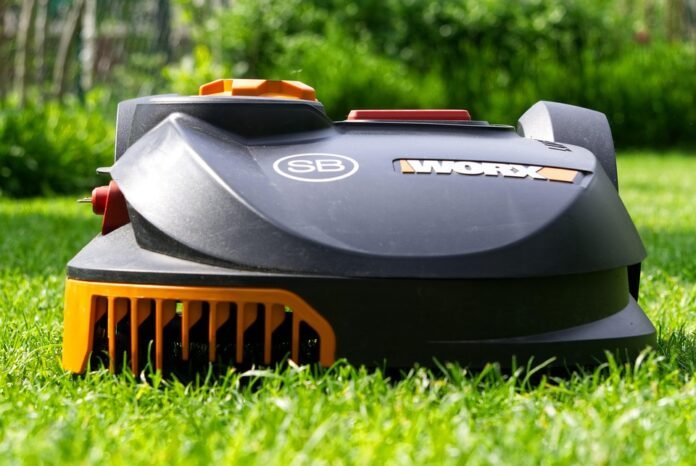Of course. Here is an article on the topic.
The Helping Hand: How Assistive Robots are Redefining Elderly Care
The image of aging is often painted with strokes of vulnerability: the struggle to reach a high shelf, the quiet ache of loneliness, the nagging fear of a fall in an empty house. For generations, the solution has been human-to-human care—a family member, a friend, or a professional caregiver. But as global populations age at an unprecedented rate, a new, unlikely hero is emerging from the labs of engineers and the minds of innovators: the assistive robot.
Far from the cold, dystopian machines of science fiction, these robots are being designed with a singular purpose: to lend a helping hand. They are not here to replace the warmth of a human touch but to augment it, creating a new paradigm for elderly care that champions independence, safety, and connection.
More Than Just a Machine: The Many Roles of a Robotic Helper
When we think of “robots,” we might picture walking, talking humanoids. While those exist, the world of assistive robotics is far more diverse. These devices are specialized tools designed to address specific challenges faced by older adults. They can be broadly categorized into three key areas:
- Physical Support Robots: These are the workhorses, designed to assist with mobility and the physical demands of daily life.
- Social and Companion Robots: These focus on mental and emotional well-being, designed to combat loneliness and provide cognitive stimulation.
- Monitoring and Safety Robots: These act as vigilant guardians, using sensors and AI to ensure a safe living environment.
The Physical Support System: Restoring Independence and Dignity
For many seniors, the desire to “age in place”—to remain in their own homes—is paramount. Physical limitations are often the biggest barrier. This is where assistive robots make a tangible difference.
Consider robotic arms that can be mounted on a wheelchair or table. These devices can help individuals with limited mobility perform tasks like picking up a dropped item, fetching a glass of water, or even assisting with feeding. They empower users by giving them back a degree of control over their environment. Similarly, advanced robotic walkers do more than just provide stability; they use sensors to anticipate the user’s movements, prevent stumbles, and can even help guide them through their home.
For caregivers, these robots are a blessing, reducing the physical strain of lifting and transferring individuals, which is a leading cause of injury in the caregiving profession. By handling the heavy lifting, these robots free up human caregivers to focus on more personal aspects of care.
Combating the Silent Epidemic: Loneliness
One of the most profound challenges of aging is social isolation. Loneliness has been linked to a host of health problems, from depression to cognitive decline. Enter the companion robot, a device designed specifically to provide social interaction.
Perhaps the most famous example is Paro, a therapeutic robot that looks like a baby harp seal. Covered in soft fur and equipped with sensors, Paro responds to touch and sound by cooing, moving its head, and wiggling its flippers. In nursing homes and memory care units, Paro has been shown to reduce stress, stimulate interaction, and provide comfort to residents, particularly those with dementia.
More advanced companions like ElliQ are designed to be proactive social partners. ElliQ doesn’t just wait for a command; it initiates conversation, suggests activities like listening to music or playing a brain game, and makes it easy for seniors to connect with family through video calls. It acts as a friendly presence in the home, helping to structure the day and keep the mind active.
The Ever-Vigilant Guardian: Ensuring Safety and Peace of Mind
The fear of a fall or a medical emergency going unnoticed is a significant source of anxiety for both seniors and their families. Monitoring robots and smart-home systems are tackling this head-on.
These systems use a network of non-intrusive sensors to learn an individual’s daily routines. If the robot detects a sudden fall or a prolonged period of inactivity that deviates from the norm, it can automatically alert family members or emergency services. They can also provide medication reminders, ensure the stove has been turned off, and monitor vital signs through connected health devices. This constant, quiet vigilance provides an invaluable layer of security, allowing seniors to live independently with confidence and giving their loved ones peace of mind.
The Human Touch: Navigating the Challenges
Despite their promise, the integration of robots into elderly care is not without its challenges. The high cost of advanced robotics makes them inaccessible to many. There are also valid concerns about data privacy and the potential for over-reliance on technology.
Most importantly, critics raise the ethical question: will we allow technology to replace genuine human connection? This is the most critical point to address. The goal of assistive robotics should never be to sideline human caregivers. Instead, they are best viewed as powerful tools that empower both the senior and the caregiver.
A robot can handle the repetitive task of medication reminders, freeing up a daughter’s visit to be about shared stories, not a checklist. A robot can ensure a parent is safe overnight, allowing a son to get a restful sleep without worry.
A Future of Collaborative Care
The future of elderly care is not a choice between a human or a robot; it’s a partnership. By handling the functional, the repetitive, and the physically demanding, assistive robots are freeing up human hands for what they do best: holding another hand, offering a reassuring word, and sharing a moment of genuine connection. They are redefining what it means to grow old, promising a future where technology and humanity collaborate to ensure our golden years are lived with dignity, independence, and joy. The helping hand, it turns out, can be both human and robotic.

